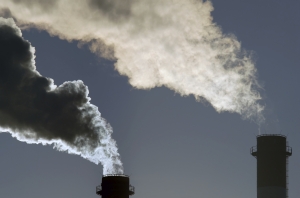Finance Minister Mathias Cormann, speaking to The Australian on Monday, stated that the budget allocation for the government’s Emissions Reduction Fund (ERF) would not be extended beyond the initial $2.55 billion commitment made in 2014-15, of which $1.2bn has been contracted over two auctions.
The office for the Environment Minister has confirmed that the government will not top-up funding for the ERF at the 2016-17 Federal Budget on May 10, with a spokesperson for Environment Minister Greg Hunt telling Fairfax that a decision on further allocations for ERF II will be made “over the next 18 months”.
While the government is “relaxed” about the future availability of funds, the lack of transparency over forthcoming allocations is likely to cast doubt over the government’s long-term support of the ERF, while increasing concern that Australia will again enter a period of climate policy limbo.
As we noted in our December Analyst Update, with $1.3 billion remaining in the first tranche of the government’s ERF, we continue to assume that auctions three (April 27-28) and four (final quarter of CY16) will be the final rounds of the ERF, with the final auction likely to take place in November 2016.
The first tranche of the ERF is therefore likely to conclude at the end of the 2016 calendar year, leaving the market with no effective policy to incentivise emissions reductions or curb emissions growth.
While the government’s Safeguard Mechanism will commence on 1 July of this year, as currently designed, no companies are expected to be liable to the scheme, with emissions baselines set at “the high point” of historical emissions, meaning covered facilities will not be accountable for most emissions increases.
The government has announced a review of its Direct Action Plan policy in June 2017, which will report five months later, in November 2017. Any new policy is therefore unlikely to be implemented before 2018-19, in around three years’ time.
ERF II funding timeline will create a demand gap
The earliest point for the government to consider a new round of funding for the ERF will be the 2017-18 Federal Budget, in May 2017, with any allocation to be formally made in July 2017, upon the commencement of the 2017-18 fiscal year.
We believe that consideration of funding for ERF II is more likely to be wound into the government’s Direct Action Plan policy review process, to report in around 18 months (November 2017), which would be in line with the government’s reported timeline to consider ERF II funding allocations.
This would imply a minimum 9 month funding gap for the ERF (November 2016 to July 2017), with a more likely scenario that funding may not be decided until November 2017 (when the review reports), creating a 12 month gap in climate policy.
Given that the ERF is currently the only source of demand for high emitting companies and carbon farming proponents














